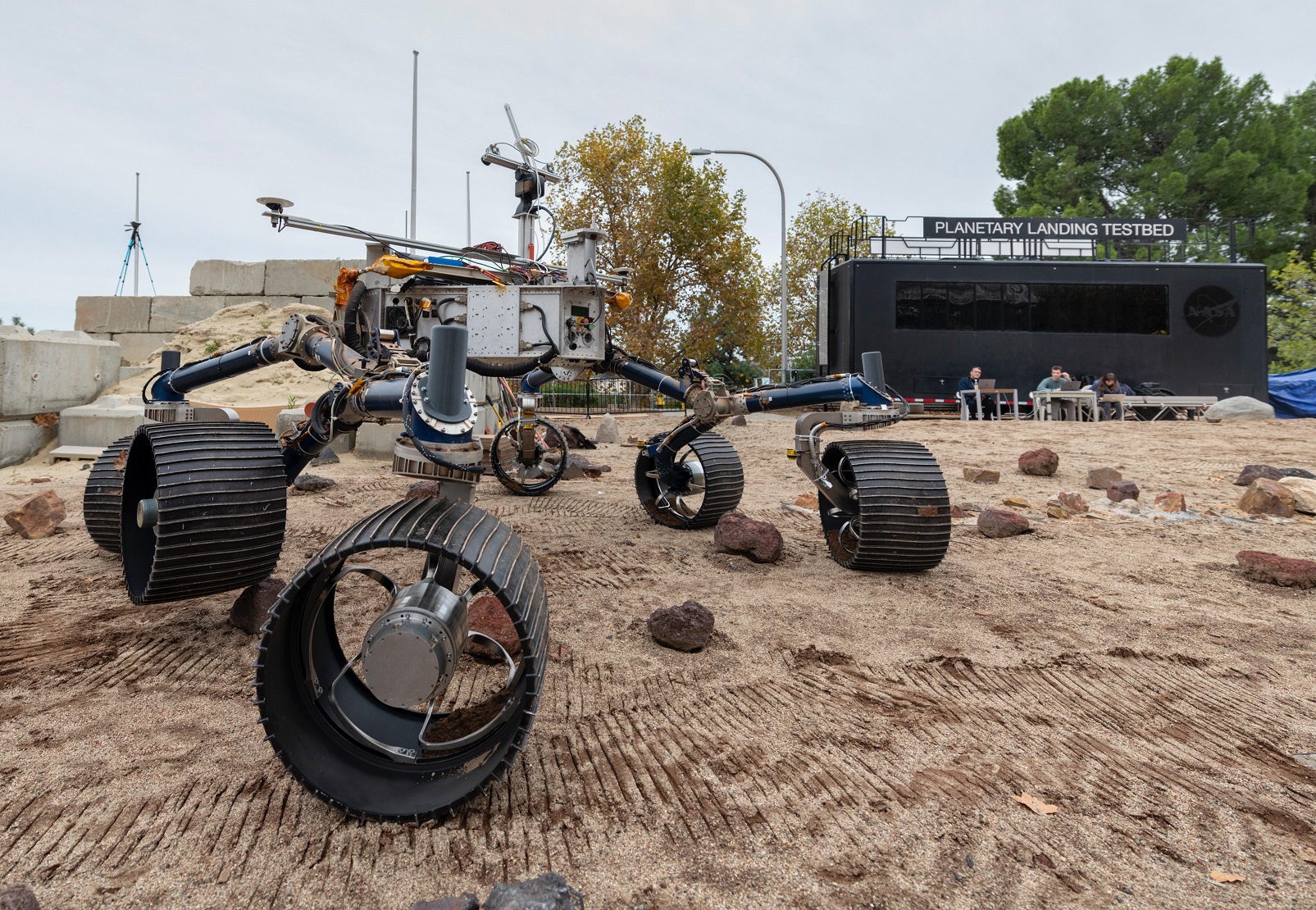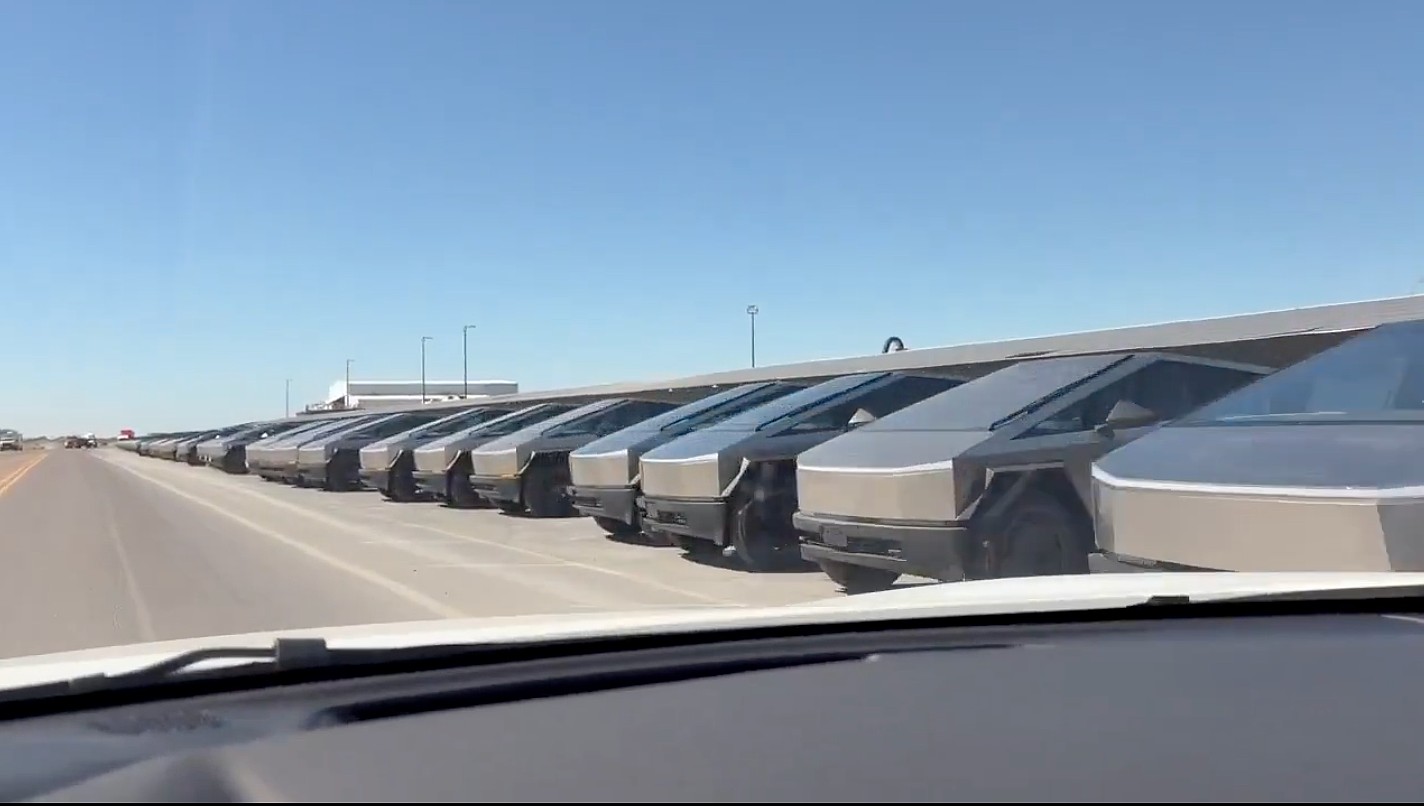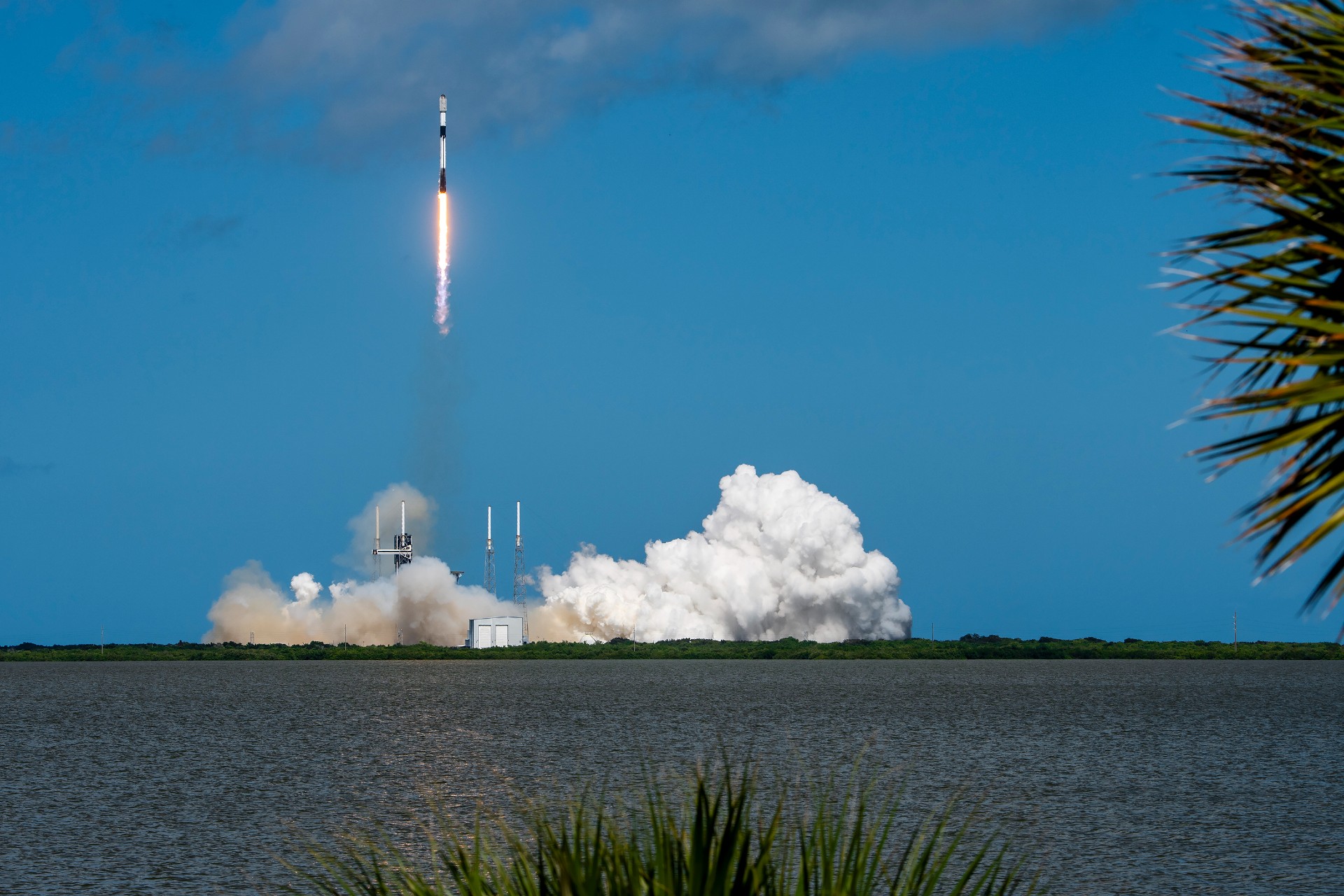

Space
Watch NASA’s Mars 2020 Rover go for a test drive in preparation for landing on Martian soil
NASA engineers witnessed their newest Mars rover take its first steps in preparation for its next mission that will search for fossilized remains of ancient life on the red planet.
The test took place inside the Spacecraft Assembly Facility clean room at NASA’s Jet Propulsion Laboratory in Pasadena, California. Engineers clad in white bunny suits—special cleanroom attire worn in order to keep the rover’s delicate instruments very, very clean—watched the yet-to-be-named rover inch forward as part of the crucial pre-flight test, which lasted just over 10-hours.
“Mars 2020 has earned its driver’s license,” Rich Rieber, the lead mobility systems engineer for Mars 2020, said in a news release. “The test unambiguously proved that the rover can operate under its own weight and demonstrated many of the autonomous-navigation functions for the first time. This is a major milestone for Mars 2020.”
During the test, NASA engineers noticed no problems, as the six-wheeled rover successfully performed all its required tasks: it rolled forward and backward and even pirouetted. According to NASA, the rover’s systems, all working in concert, enabled it to steer, turn and drive with ease.
The testing of the vehicle’s autonomous navigation system went well. Since these systems performed perfectly under Earth’s gravity, engineers expect them to perform just as well under Mars’ gravity, which is only 38% of what we experience on Earth.
The test went so well that NASA says the “next time the Mars 2020 rover drives, it will be rolling over Martian soil.” The Mars 2020 rover is scheduled to launch in July 2020, followed by a landing in Jezero Crater on February 18, 2021.
“A rover needs to rove, and Mars 2020 did that,” John McNamee, project manager for Mars 2020, said in a statement. “We can’t wait to put some red Martian dirt under its wheels.”
During its initial test drive, the rover crept forward in small, 3-feet ( 1-meter) increments, enabling the engineers to properly assess its movement and steering abilities. The rover also drove over small ramps designed to simulate uneven Martian terrain.
Engineers were also able to collect data from the vehicle’s Radar Imager for Mars’ Subsurface Experiment (RIMFAX)—an instrument that uses radar waves to scan the ground below the rover. Depending on the terrain, once on Mars, RIMFAX will penetrate the ground, probing the red planet’s subsurface to depths of more than 30-feet (or 10-meters).

Curiosity, the Mars 2020 rover’s predecessor currently roaming around on Mars, is predominantly commanded by people back on Earth. However, the rover does have the ability to autonomously choose where to fire its laser spectrometer. As part of its onboard science arsenal, the instrument—called ChemCam—is designed to analyze the chemical composition of nearby rocks and soil.
Mars 2020, on the other hand, will be more independent than any of its predecessors. Equipped with advanced auto-navigation software, the rover will drive with the help of a dedicated onboard computer operating on data collected from the vehicle’s high-resolution, wide-field color cameras.
NASA engineers estimate that the rover will travel an average of 650 feet (200 meters) per day. For comparison, Curiosity’s current distance record for a single day is 702 feet (214 meters), although that’s not typical. The Mars 2020 rover will also be sporting more durable wheels. Curiosity’s wheels are visibly worn after seven years on the Martian surface; engineers hope Mars 2020’s wheels will hold up better.

Once on Mars, the rover will land at Jezero Crater—a former lake bed, rich in mineral deposits known for preserving microfossils here on Earth. In this crater, the rover will search for any signs that life may have once existed on Mars.
While acting as a remote scientist, the rover will unlock clues about the planet’s climate and geology as well as collect samples that will be returned to Earth sometime in the future.
Following the loss of the Opportunity rover, Curiosity has been the sole robot roaming the Martian surface. That will change in 2021, but they won’t be the only ones.
They will be joined by another: The European Space Agency is teaming up with Russia to send their version of the Mars 2020 rover. The Rosalind Franklin ExoMars rover will arrive on Mars at a soon-to-be-announced location, in 2021.

Cybertruck
Tesla Cybertruck fleet takes over at SpaceX’s Starbase
Interestingly, the Cybertruck uses the same exterior, a stainless steel alloy, as SpaceX rockets. This synergy between the two companies and their very different products shows a very unified mentality between Musk companies.

Tesla Cybertrucks have taken over at SpaceX’s Starbase facility in Texas, as hundreds of the all-electric pickup trucks were spotted late last week rounding out a massive fleet of vehicles.
The Cybertruck fleet is geared toward replacing gas vehicles that are used at Starbase for everyday operations. The only surprise about this is that it was not done sooner:
Was just visiting. pic.twitter.com/5Q9wPPaeuH
— Derek Li (@derek1ee) October 31, 2025
Deliveries have been going on for a few weeks, as Cybertrucks have made their way across the state of Texas from Austin to Starbase so they could be included in SpaceX’s fleet of vehicles at the facility.
Interestingly, the Cybertruck uses the same exterior, a stainless steel alloy, as SpaceX rockets. This synergy between the two companies and their very different products shows a very unified mentality between Musk companies.
However, there are some other perspectives to consider as SpaceX is utilizing such a massive fleet of Cybertrucks. Some media outlets (unsurprisingly) are seeing this as a move of weakness by both Tesla and SpaceX, as the aerospace company is, in a sense, “bailing out” lagging sales for the all-electric pickup.
It’s no secret that Tesla has struggled with the Cybertruck this year, and deliveries have been underwhelming in the sense that the company was anticipating between 1 million and 2 million orders for the vehicle before it was widely produced.
A lot of things changed with the Cybertruck between its 2019 unveiling and 2023 initial deliveries, most notably, price.
The price of the Cybertruck swelled significantly and priced out many of those who had pre-ordered it. Some have weighed the option of whether this purchase was a way to get rid of sitting inventory.
However, it seems more logical to consider the fact that SpaceX was likely always going to transition to Teslas for its fleet, especially at Starship, at some point.
It doesn’t seem out of the question that one Musk company would utilize another Musk company’s products, especially considering the Cybertruck has been teased as the vehicle that would be present on Mars.
News
SpaceX opens up free Starlink service for those impacted by Hurricane Melissa

SpaceX is opening up its internet service, Starlink, to those impacted by Hurricane Melissa, as it made landfall in Jamaica and the Bahamas as a Category 5 storm.
Hurricane Melissa is expected to reach wind speeds of over 165 MPH over the next few days as it extends out into the Atlantic Ocean by Thursday and Friday.
Satellite imagery shows Hurricane #Melissa‘s growth from its formation on October 21 to a Category 5 hurricane through October 27, 2025. #HurricaneMelissa pic.twitter.com/goR3Hbgb9c
— The Weather Network (@weathernetwork) October 27, 2025
Citizens in Jamaica and the Bahamas have been preparing for the storm for the past week, getting necessary goods together and preparing for the massive storm to arrive. It finally did yesterday, and the first images and video of the storm are showing that it could destroy many parts of both countries.
Starlink is now being opened up for free until the end of November for those impacted by the storm in Jamaica and the Bahamas, SpaceX announced today:
For those impacted by Hurricane Melissa in Jamaica and the Bahamas, Starlink service is now free through the end of November to help with response and recovery efforts → https://t.co/fUko3xSviJ
— Starlink (@Starlink) October 28, 2025
It is a move similar to the one the company made last year as Hurricane Helene made its way through the United States, destroying homes and property across the East Coast. SpaceX offered free service for those impacted by the destruction caused by the storm.
The free Starlink service was available until the end of 2024.
Elon Musk’s companies have also made similar moves to help out those who are impacted by natural disasters. Tesla has offered Free Supercharging in the past, most notably during the California wildfires.
Tesla and SpaceX’s LA fire relief efforts: Cybertrucks, free Starlink and more
One major advantage of Starlink is that it is available for use in situations like this one, where power might be required to operate things like a modem and router.
Internet access is a crucial part of survival in these situations, especially as it can be the last leg some stand on to get in touch with emergency services or loved ones.
News
SpaceX reaches incredible Starlink milestone

SpaceX has reached an incredible milestone with its Starlink program, officially surpassing 10,000 satellites launched into low Earth orbit since starting the program back in 2019.
Last Sunday, October 19, SpaceX launched its 131st and 132nd Falcon 9 missions of 2025, one from Cape Canaveral, Florida, and the other from Vandenberg, California.
The 10,000th Starlink satellite was aboard the launch from California, which was Starlink 11-19, and held 28 v2 mini optimized satellites.
The achievement was marked by a satellite tracker developed by Jonathan McDowell.
🚨 With its Falcon 9 launch last Sunday, SpaceX officially has 10,000 Starlink satellites in orbit pic.twitter.com/xS5RVZ4ix0
— TESLARATI (@Teslarati) October 26, 2025
The first Starlink launch was all the way back on May 23, 2019, as SpaceX launched its first 60 satellites from Cape Canaveral using a Falcon 9 rocket.
Of the over 10,000 satellites in orbit, the tracker says 8,608 are operational, as some are intentionally de-orbited after becoming faulty and destroyed in the atmosphere.
SpaceX has truly done some really incredible things during its development of the Starlink program, including launch coverage in a global setting, bringing along millions of active subscribers that use the service for personal and business use, locking up commercial partnerships, and more.
Starlink currently operates in around 150 countries, territories, and markets and is available at least somewhere on all seven continents.
Additionally, Starlink has over 5 million subscribers worldwide, and 2.7 million have joined the program over the past year. It has revolutionized internet access on commercial aircraft as well, as several high-profile airlines like Qatar and United, among many others, have already installed Starlink on some of their planes to deliver more stable connectivity for passengers and crew.
SpaceX has the approval to launch 12,000 Starlink satellites from the FAA, but it plans to bring over 30,000 to its constellation, giving anyone the ability to have access to high-speed internet.









